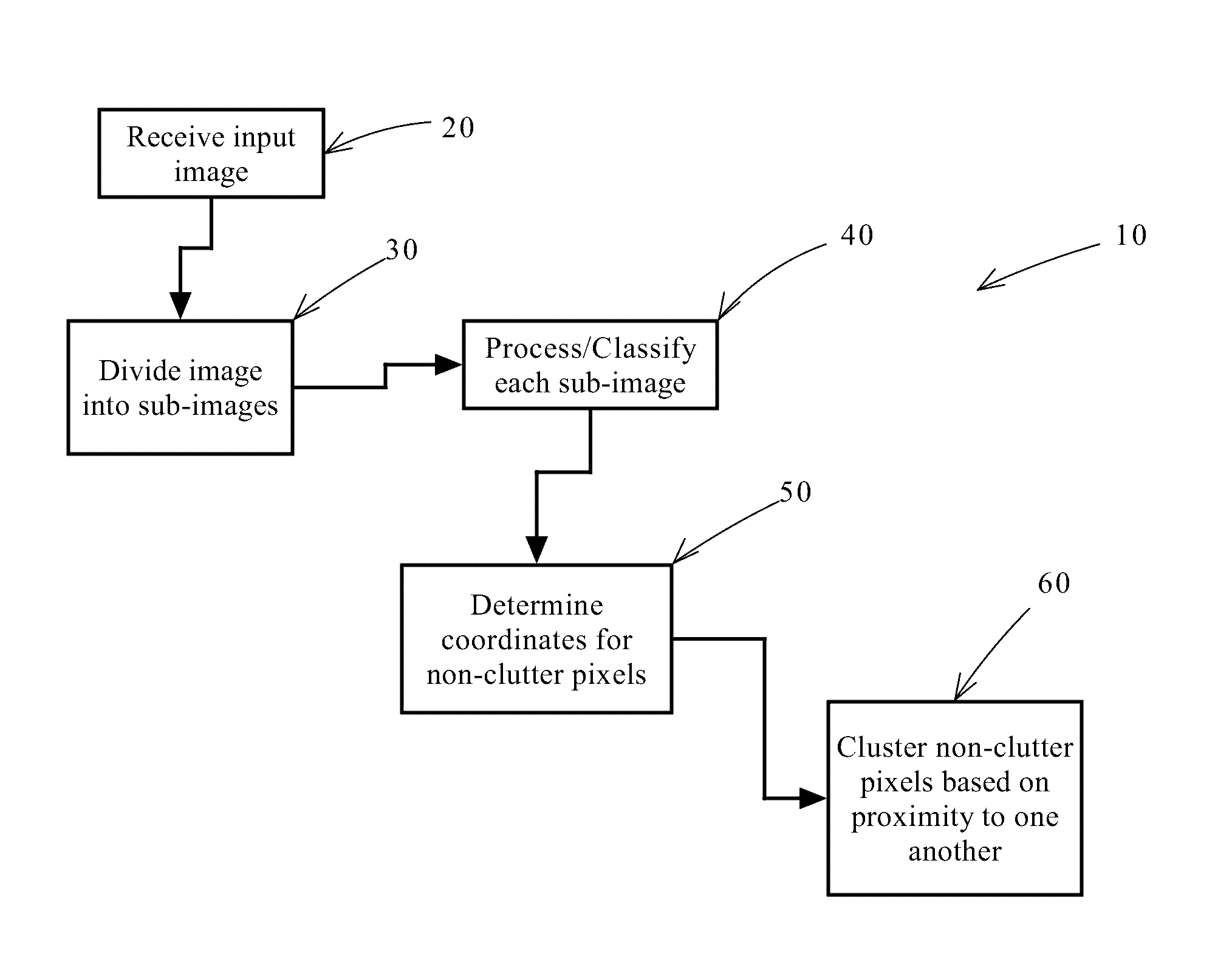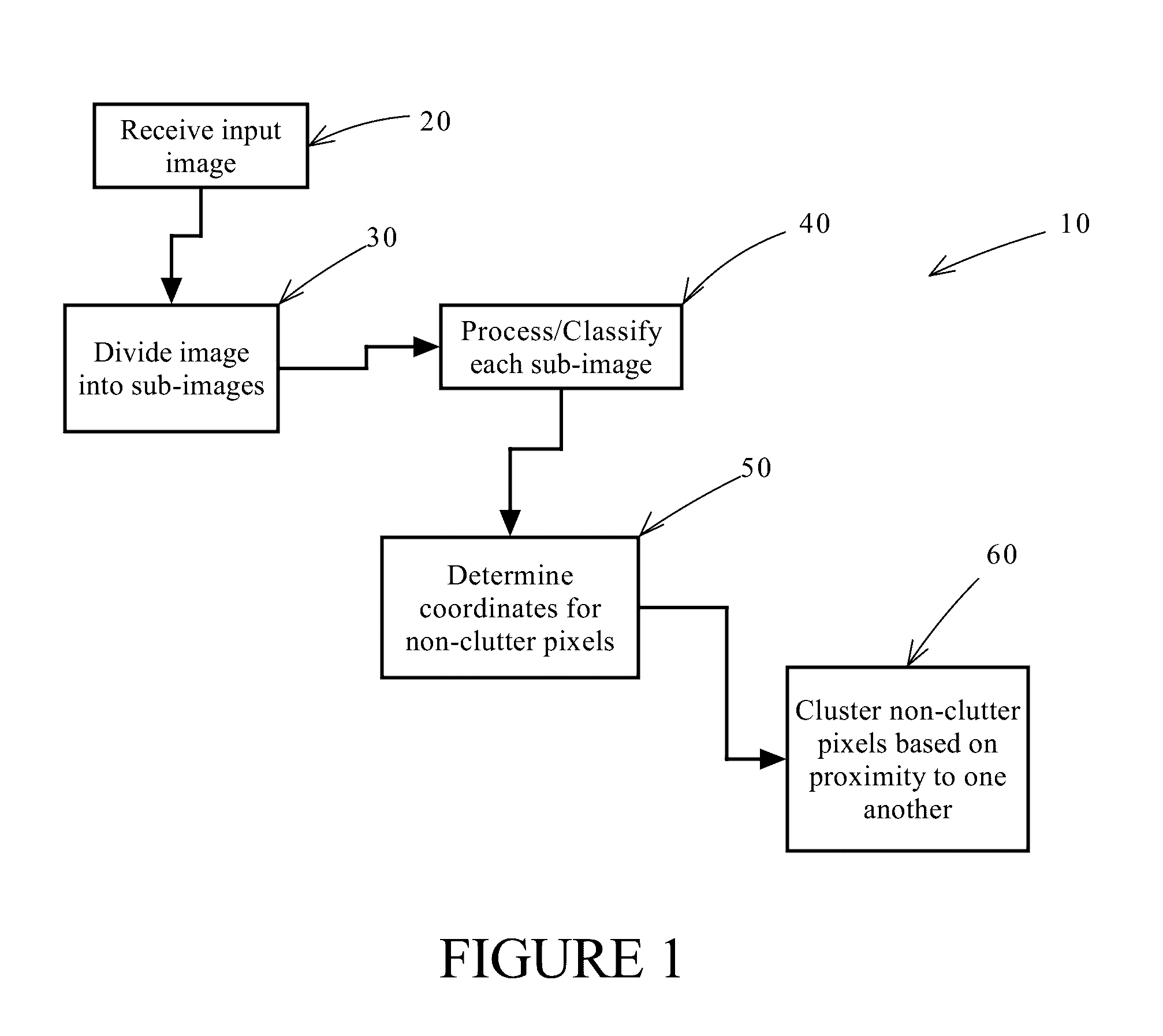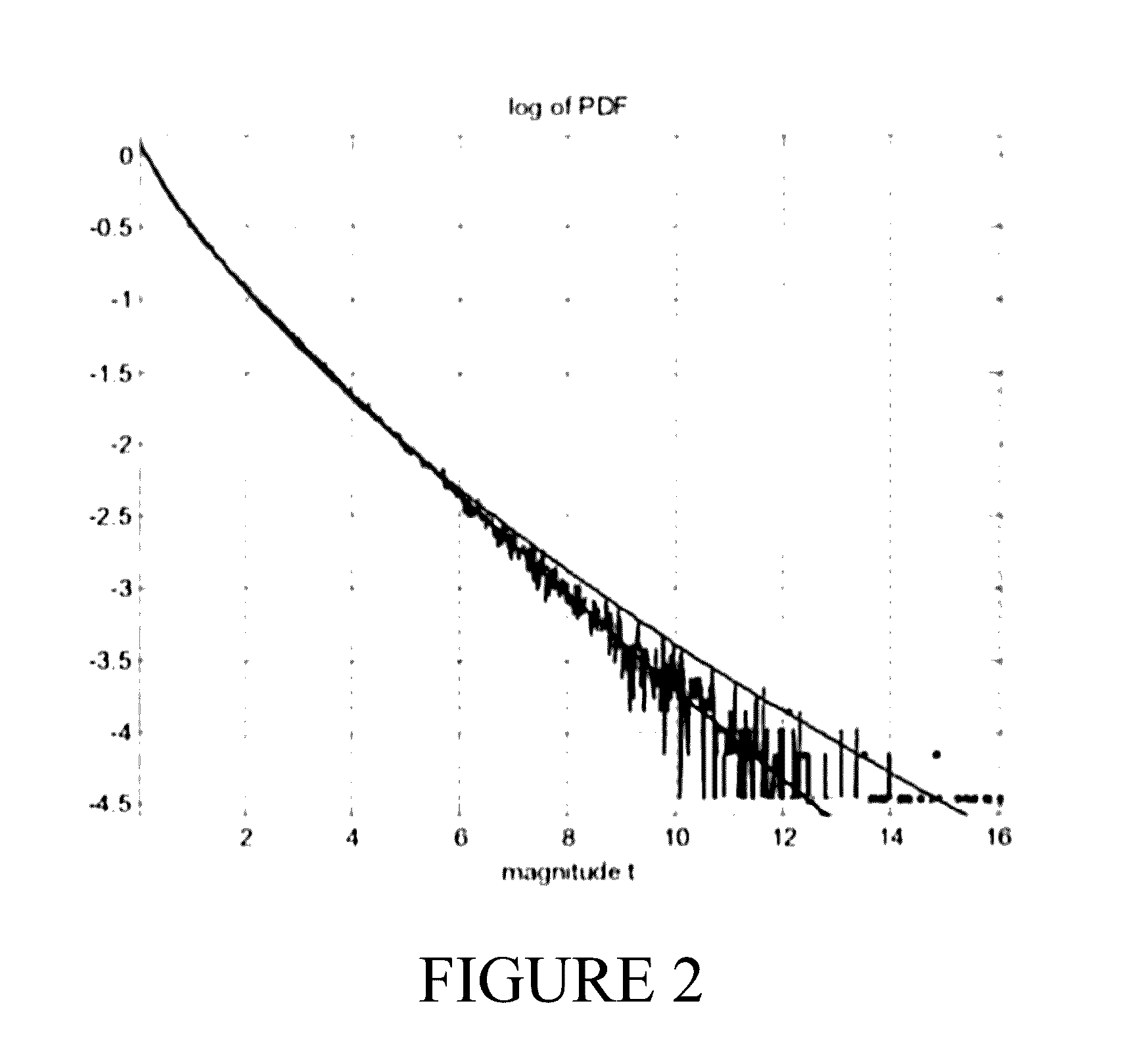Processing synthetic aperture radar images for ship detection
- Summary
- Abstract
- Description
- Claims
- Application Information
AI Technical Summary
Benefits of technology
Problems solved by technology
Method used
Image
Examples
Embodiment Construction
[0037]Referring to FIG. 1, a flowchart according to one aspect of the invention is illustrated. The flowchart 10 begins at step 20 where the input image is received. The image is that of a sea or ocean (i.e. mostly water) region and is gathered using one or more synthetic aperture radars.
[0038]Step 30 then divides the image into multiple sub-images. The division of the image may be region based or content based. A region based approach divides the image into regions and each region becomes a sub-image. A content based approach divides the image based on the content. Thus, as an example, a section of the image with mostly dark pixels would form one sub-image while a section with mostly light pixels would form another sub-image. Another alternative divides the input image into sub-images of a fixed size and resolution. This would split each input image into a predetermined number of sub-images for further processing.
[0039]In step 40, each sub-image is processed in turn. Processing eac...
PUM
 Login to View More
Login to View More Abstract
Description
Claims
Application Information
 Login to View More
Login to View More - R&D
- Intellectual Property
- Life Sciences
- Materials
- Tech Scout
- Unparalleled Data Quality
- Higher Quality Content
- 60% Fewer Hallucinations
Browse by: Latest US Patents, China's latest patents, Technical Efficacy Thesaurus, Application Domain, Technology Topic, Popular Technical Reports.
© 2025 PatSnap. All rights reserved.Legal|Privacy policy|Modern Slavery Act Transparency Statement|Sitemap|About US| Contact US: help@patsnap.com



